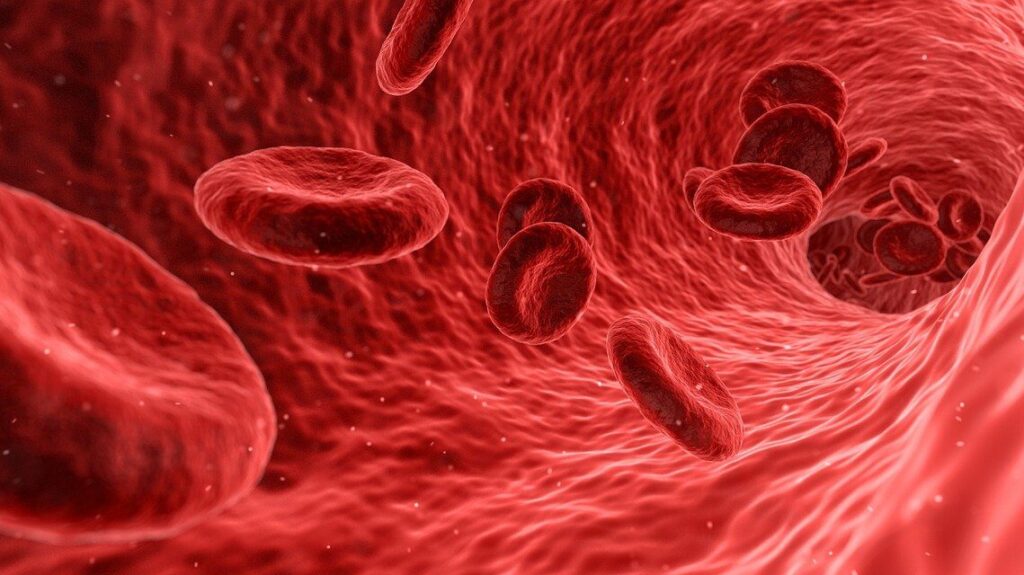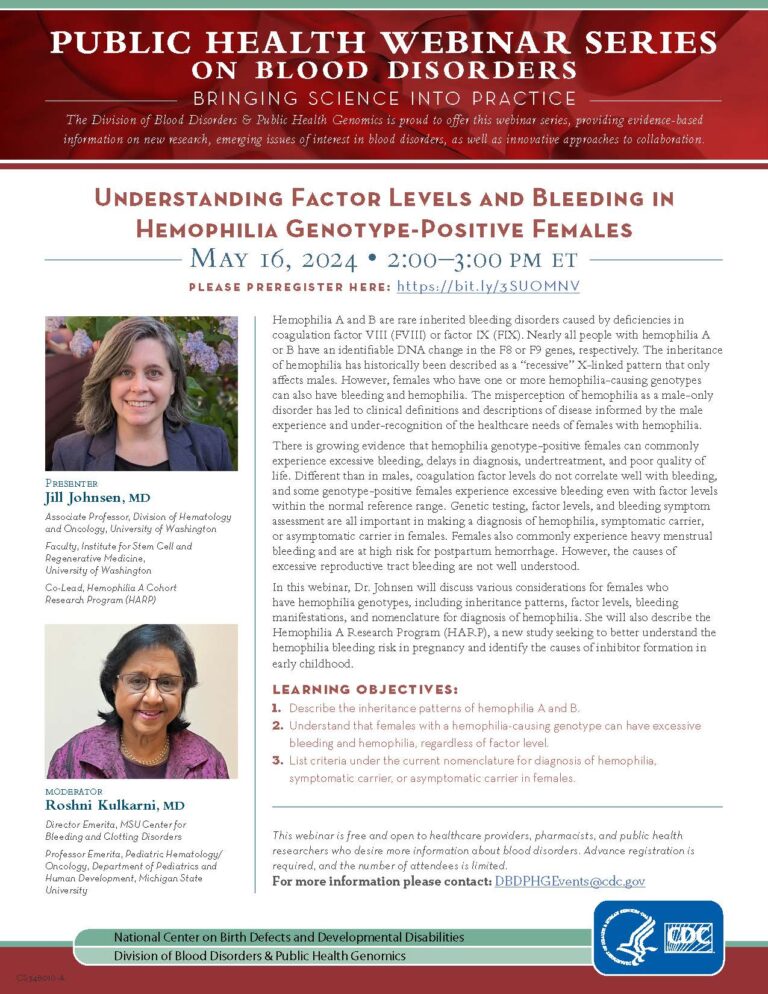
CDC Webinar: Understanding Factor Levels and Bleeding in Hemophilia Genotype-Positive Females
Speaker
-
 Dr. Jill Johnsen
Dr. Jill JohnsenDr. Johnsen is a physician scientist with expertise in classical (benign) hematology. She is an Associate Professor of Medicine at the University of Washington and sees patients at the Washington Center for Bleeding Disorders. She studies the genetics and biology of variation in clotting factors and blood groups (blood types), with emphasis on coagulation factor VIII (FVIII), factor IX (FIX), and von Willebrand factor (VWF). She is particularly interested to leverage these research efforts towards better understanding how bleeding uniquely impacts females. Her research program is dedicated to improving the diagnosis and care of patients with blood disorders through advancement of our basic understanding of the underlying biology and through the translation of new knowledge and laboratory innovations to improve clinical testing. Her research leverages new technologies, including targeted and whole genome next generation DNA sequencing, multi-omics, long-read sequencing, and new and novel molecular methods. In vitro functional studies, including large scale deep mutational scanning of genes of interest in mammalian cell display systems, will inform and improve interpretation of the functional significance of DNA variants discovered in hemophilia.


